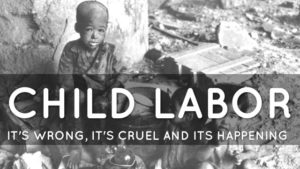 Antigua and Barbuda, and St Kitts and Nevis are the two latest countries to sign on to a regional initiative to boost efforts to combat child labour and achieve the goal of total eradication by 2020.
Antigua and Barbuda, and St Kitts and Nevis are the two latest countries to sign on to a regional initiative to boost efforts to combat child labour and achieve the goal of total eradication by 2020.
The regional initiative was developed by representatives from Latin America during the 18th International Labour Organisation (ILO) Regional Meeting in Lima, Peru. At that meeting four years ago, Labour ministers, representatives of governments and the Director General of the ILO, Guy Ryder, signed the document signalling “a commitment to achieve the goal of eradication” and establishes a series of commitments based on strengthening intergovernmental cooperation.
Antigua and Barbuda and St Kitts signed on to the document last Thursday during the 19th Regional Meeting of the ILO which was held from October 2 to 5 in Panama.
Labour Commissioner for Antigua Eltonia Rojas said Ambassador to the ILO Wigley George signed the document on behalf of the government while in Panama, it was also sent to Labour Minister Steadroy “Cutie” Benjamin for his signature.
Rojas said while child labour may not be a major issue for Antigua at this time, it is rampant in some countries.
According to the ILO, in recent years, important achievements have been made in reducing the number of children in child labour by 7.5 million. However, if progress continues at this pace, it will require at least 40 years to achieve the goal of eradication.
According to ILO estimates, there are 12.5 million children in child labour in Latin America and the Caribbean, of which the vast majority, 9.5 million, are in hazardous work.
The “Regional Initiative for Latin America and the Caribbean Free of Child Labour” is designed to accelerate the prevention and eradication of child labour and includes a number of indications to strengthen the mechanisms of action and identification of the practice.
The document states that the persistence of child labour, especially its worst forms, is a factor that exacerbates social inequality, which deepens social and economic vulnerability.
